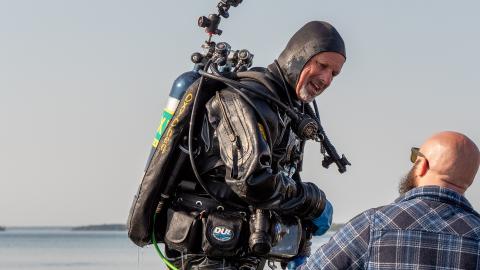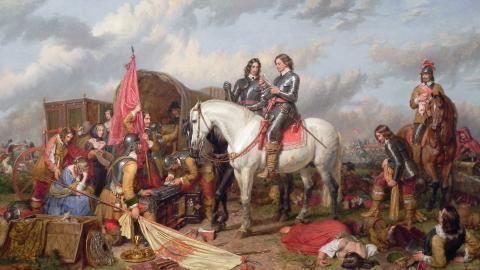Several factors contributed to the downfall of the Knights Templars after two hundred years of military might and spearheading a lucrative trading empire. The principle turning point was in 1291 after they lost the city of Acre, a walled port city in today’s northern Israel which marked the end of further crusades in the eastern Mediterranean area.
A growing belief by the public that the ‘best of all knights’ had declined fuelled scepticism about the once invincible religious Order – and worse, gave wily monarchs such as Philip IV of France (1268-1314) the perfect opportunity to destroy a military and monastic institution that was feared to have become too powerful.
Behind unfounded accusations of financial corruption and heresy, King Philip – known to be deeply in debt to the Templars – with the support of Pope Clement V, grabbed his chance to wrest wealth and assets from the two-hundred-year-old Order that had by 1302 found itself no longer controlling any part of the Holy Land.
On the 13th October 1307, all the Templar Brothers in France were arrested in an audacious series of dawn raids and imprisoned on charges of heresy. ‘Heresy’ was defined as anything that did not conform to the accepted beliefs of the church and anyone defying norms of ecclesiastical authority became suspect. Punishments could be brutal, such as life imprisonment for the convicted – on confession - or burning the condemned at the stake.
Grand Master of Cyprus
Jacques de Molay was the 23rd and last Grand Master of the Knights Templars stationed in Cyprus, the headquarters of a dwindling and once powerful Order in the East. Born around 1250 he came from a family of minor nobility and is thought to have been dubbed a Knight at just 21. Credited with trying to reform the Order and lead the re-conquest of Holy Lands lost to the Egyptian Mamluks, Molay was approaching his mid sixties when he tried to drum up support from western monarchs for a 2nd Crusade.
One of Molay’s actions that unleashed a degree of hostility towards him from King Philip was when he objected to plans to unify the Knights Templars and the Knights Hospitaller - a rival order that cared for sick and injured pilgrims in the Holy Land - on the grounds that he believed the rivalry between the Orders had led them to their best for Christendom. King Philip being in enormous debt to the Templars was in favour of merging the Orders under his own command, which would have given him unprecedented authority over the institution, technically making him ‘War King’
Pope Clement V, under pressure to fall in line with King Philip’s decisions - Philip had disposed of previous Popes through trumped up charges of heresy - moved the Papacy to Poitiers in France from Italy where the dogmatic King could wield more influence over both the Papacy and the Templars. Philip took advantage of growing rumours of impropriety committed by the Order which Clement conveniently undertook to investigate on behalf of the crown.
In all, there were five serious charges alluding to corruption and immoral behaviour against the Templars which King Philip saw as a means to have the Order’s assets and wealth confiscated and turned over to the Royal treasury. The elderly Molay was interrogated by Philip’s agents and as a result, was forced to write a letter confessing to the Order’s acts of heresy such as the Templar brothers’ denial of Christ and abusing the crucifix in sacrilegious initiation rituals.
Sins of the Templars
The arrests of the Templars for crimes involved a litany of alleged offences including charges that members had participated in homosexual practices, denied Jesus Christ as a prophet, debased the crucifix and to have taken to ‘idolatry’ by worshipping a mysterious mummified body in the shape of a ‘cat’s head’ as a representation of Satan. In the 14th century, the worst sort of subversion as recognised by a largely illiterate and superstitious population was that of a religious nature. Even though the Templars’ ‘sins’ were little more than a matter of hearsay the grip of the Church on ordinary people’s conscious thought was all powerful.
Because it was virtually impossible to escape from a charge of heresy it was a certain means of ensuring the ruin of an enemy or rival, hence the attack on Molay and his Templar brothers by King Philip. The complex and protracted trial of the Templars lasted five years with Jacques de Molay and other Masters such as Geoffroi de Charney held in jail in Paris when finally on March 22nd 1312 the Order of the Knights Templar was abolished by papal decree at the Council of Vienne.
Confessions & Torture
Torture played a terrifying part in extracting confessions from many of the Templar brothers during the trial. The ideology of the time believing that if a prisoner was innocent they would be able to bear any level of extreme pain as God would be on their side. From stretching on the rack to being hoisted in the air until a victim’s arms became dislodged from their sockets there was little that the experienced torturer would not inflict on the body to bring about pleas for mercy or a desperate confession simply to put an end to the pain.
Jacques de Molay had originally confessed to charges of heresy but after having languished with several other brothers in jail for seven years he revoked his confession and was interrogated again in Paris in the presence of two cardinals. Admitting now that he made a false confession years before in order to save his own life, he willingly revoked all previous statements of guilt against the Order and stated that the charges were fictitious.
From stretching on the rack to being hoisted in the air until a victim’s arms became dislodged from their sockets there was little that the experienced torturer would not inflict on the body.
At a point when the options were finally clear to the imprisoned brothers and the Order was now consigned to history Jacques de Molay along with other Masters who had also previously made false confessions found their spirit again and accepted death at the stake. The canons pronounced that ‘lapsed heretics’ were to be burned without a hearing and with no formal judgement by the papal commission needed.
Molay’s Execution & Curse
On 18th March 1314 when Molay, along with three other Templar leaders, were led to their final grim destination a small island in the Seine the former Templar Grand Master was 70 years old.
Out of the flames which lapped around him Molay’s voice was alleged to have been heard cursing King Philip and his family along with Pope Clement. As he experienced the agony of being burned alive Molay is said to have invoked a ‘curse’ calling to Christ to prove the Order’s innocence and bring its persecutors to the judgement of God. Thus the institution of the Order of the Knights Templar was destroyed, dying as it had been born and lived in blood, rage and Catholic piety.
Watch Buried Tuesdays at 10pm.
Whether Molay’s calling for revenge at the point of an agonising death had any actual effect as a curse against his persecutors is debatable but in an extraordinary coincidental turn of fate or bad luck, Pope Clement died just thirty-three days after Molay’s execution. Seven months later King Philip himself became gravely ill and unexpectedly passed away on the 29th of November. Over the next decade, the Capetian dynasty of which King Philip was a part of staggered to its end as each of Philip’s childless sons briefly became King and died. Whether or not one believes in Jacques de Molay’s curse as divine retribution there is no doubting the calamity France faced after the Templars’ downfall as the Kingdom’s internecine convulsions led to the Hundred Years’ War with England. The descendants of King Philip became known as the ‘Accursed Kings’ reinforcing the mythology revolving around Jacques de Molay’s curse.
















